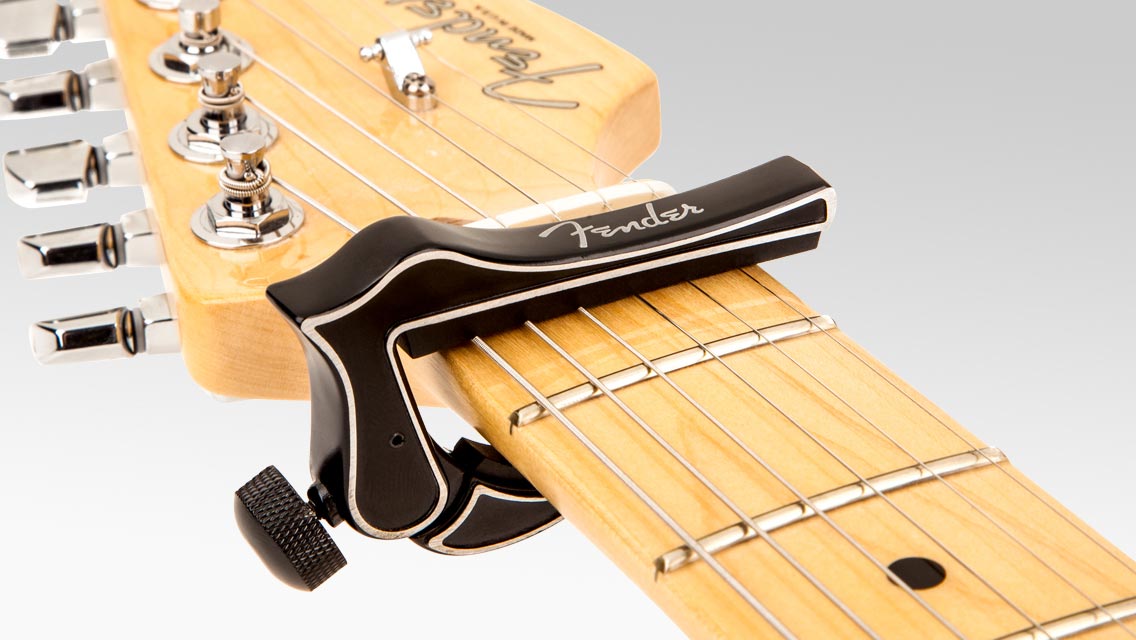By Lana Cooper
Acoustic Guitar 101
Learn about the parts of your acoustic guitar, pitch and an easy way to remember the names of the strings.

Sections
Not all guitars are created equal. For starters, there's a big difference between the sound and look of an acoustic guitar and an electric guitar. And when you are just getting familiar with your acoustic guitar, maybe one in Fender's Paramount or California Series, it helps to know what those differences are.
Acoustic Guitar 101
Sometimes known as a "hollow body guitar" or "classical guitar," an acoustic guitar has several main parts and several smaller parts that comprise the instrument and help it sound the way it does:
● Body: The wooden construction of the guitar itself, which features:
The top of your guitar (or front).
The soundhole of your guitar, which sits in the top middle portion of the top of your guitar.
The rosette, which is a decorative border around the sound hole of your guitar
The bridge, the area of your guitar that sits approximately six inches beneath the sound hole and where your strings are attached.
The waist or S-curve of your guitar that forms the sides of your guitar. The S-curve not only plays a role in forming the acoustics of the sound produced from your guitar, but makes it comfortable to rest the guitar on your knee when playing in a seated position.
The pickguard, which is typically made from plastic or acrylic. This component is situated near the left side of your guitar's rosette and soundhole, near where your hand would be when you strum the guitar. Its purpose is to help prevent you from scratching the finish of your guitar.
● Neck: The long, thin strip of wood that extends from the body. On the neck of the guitar, you'll find:
The fretboard, which extends along the length of the neck.
Frets, pieces of wire underneath the strings. Frets are placed at distinct intervals long the fretboard to mark where to place your fingers to play notes.
Fret inlays, which are small dots placed in the center of specific frets: the 3rd, 5th, 7th, 9th, 12th (which has two inlays on its fret), 15th, and 17th. These inlays help make it easier to find and play a specific fret.
The nut, (also known as "the zero fret") which sits at the very top of the fretboard. It anchors the strings in place and elevates them away the fretboard so they don't sound muted when played.
● Headstock: The large block of wood that sits at the top of the neck
Tuning pegs, which are anchored through the the headstock and where the other end of your strings are attached. Most guitars have six strings and a corresponding number of pegs. These pegs are used to tune each of the six strings on your guitar. Guitars that have 12 strings will have 12 tuning pegs, one for each string.
And of course, strings. Most guitars have six strings: a low E, A, D, G, B, and high E string.
String Names and Pitches
There are six strings on a guitar and each one has its own unique pitch. Let's get to know each of them:
● 1st string - This is the thinnest of all of the strings and registers a high E when played. ● 2nd string - The second thinnest of the strings, the second string plays an B note when struck. ● 3rd string - One of the middle strings, the third string plays the tone of G. ● 4th string - The thicker of the two middle strings, the fourth string plays a D note. ● 5th string - The second thickest string plays an A when strummed. ● 6th string - This is the thickest of the strings. It sounds a low E when struck.
An easy way to remember the order of the strings and their corresponding notes is this handy mnemonic phrase:
Easter Bunnies Get Dizzy At Easter
If you'd like to start learning notes, chords and your favorite songs, head to Fender Play and sign up for a free trial.
Don’t miss out!
Be the first to know about new products, featured content, exclusive offers and giveaways.


